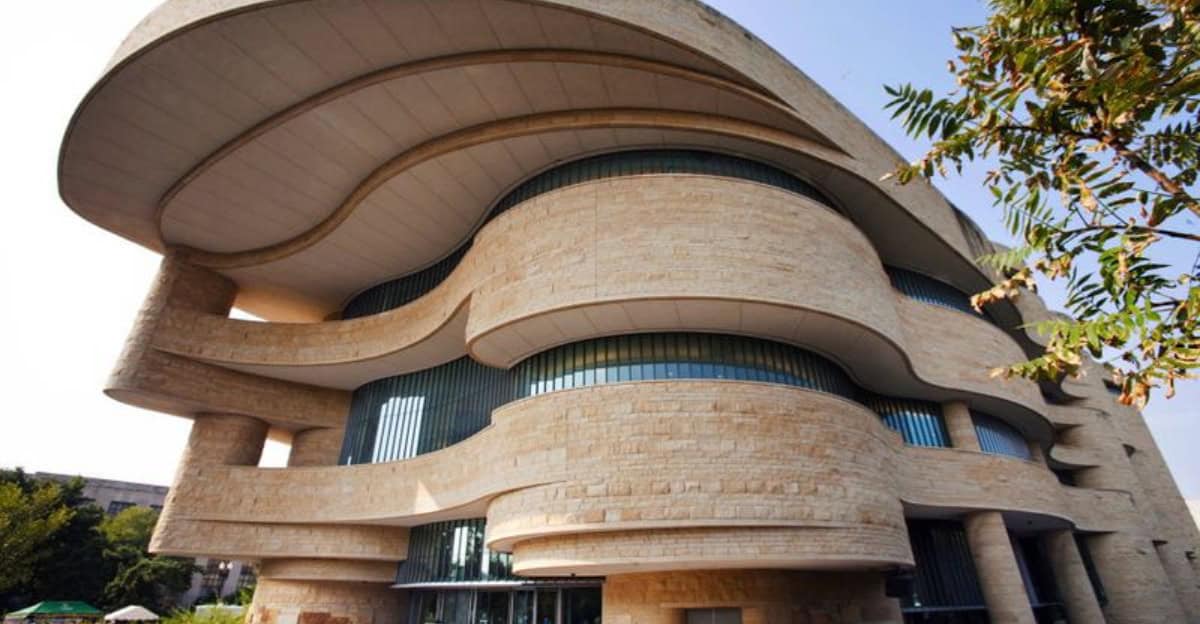Organic architecture is a harmonious style that connects human-made structures with the natural environment.
This philosophy emphasizes blending buildings seamlessly with their surroundings, using natural materials and designs inspired by the landscape.
The result is architecture that not only complements nature but enhances it, creating spaces that feel alive and nurturing.
Here, we explore 10 stunning examples that embody this ethos, each offering a unique perspective on how architecture can coexist beautifully with the natural world.
1. Fallingwater by Frank Lloyd Wright
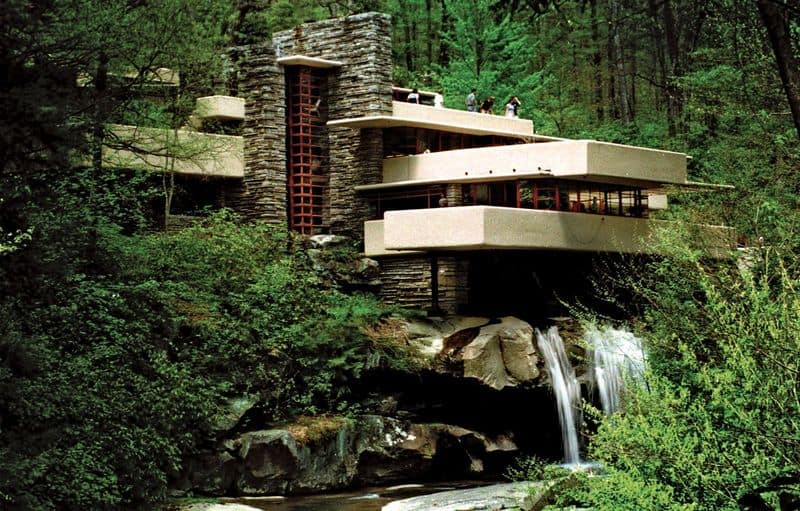
Nestled in the heart of Pennsylvania’s woodland, Fallingwater represents the pinnacle of organic architecture.
Designed by Frank Lloyd Wright in 1935, this residence is famous for its daring cantilevered structure that stretches over a waterfall. The house doesn’t just sit on the landscape; it becomes part of it.
Every element, from the stone walls mimicking the rocky outcrop to the large windows framing forest views, connects the indoors with the outdoors.
Fallingwater’s design encourages residents to live alongside nature, listening to the rhythmic flow of water and feeling the cool forest air.
2. Antoni Gaudí’s Casa Milà
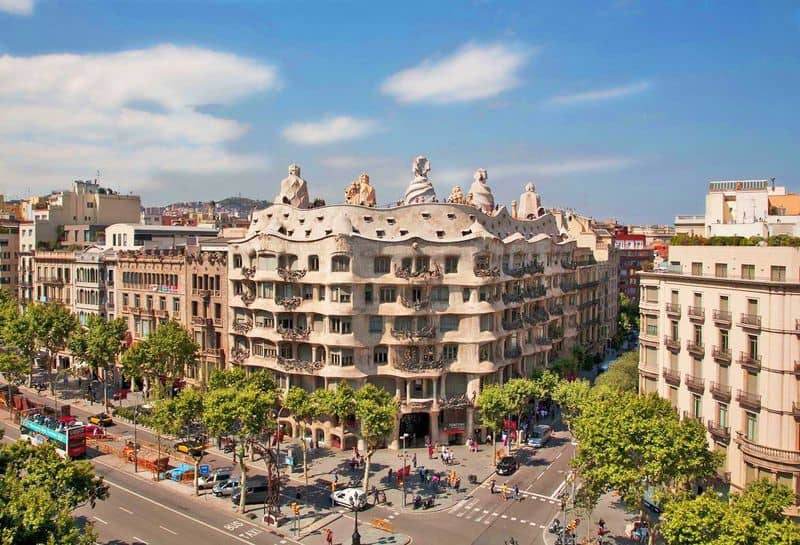
Casa Milà, also known as La Pedrera, stands as a testament to Antoni Gaudí’s visionary approach to architecture.
Located in Barcelona, this building’s undulating stone facade and wrought-iron balconies take inspiration from natural forms.
Gaudí’s design eschews straight lines in favor of curves, creating a sense of movement and fluidity. Inside, the light wells and open courtyards invite natural light, echoing the openness of the outdoors.
Casa Milà’s organic design not only enhances its aesthetic appeal but also fosters an inviting atmosphere that brings nature into urban living.
3. Zaha Hadid’s Heydar Aliyev Center
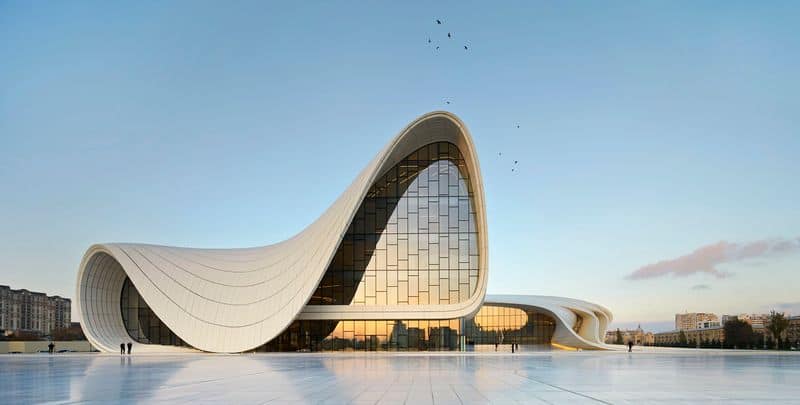
Zaha Hadid’s Heydar Aliyev Center is a marvel of modern organic architecture, located in Baku, Azerbaijan.
The building’s fluid, wave-like form defies traditional architectural norms, showcasing Hadid’s signature style.
Its continuous, flowing curves create a dynamic interplay with the surrounding environment, symbolizing movement and growth.
Inside, the structure’s seamless spaces offer flexibility and innovation, mirroring the building’s exterior.
This architectural masterpiece embodies the spirit of progress and connectivity, inviting visitors to explore its harmonious blend of form and function in an ever-evolving cityscape.
4. Taliesin West by Frank Lloyd Wright
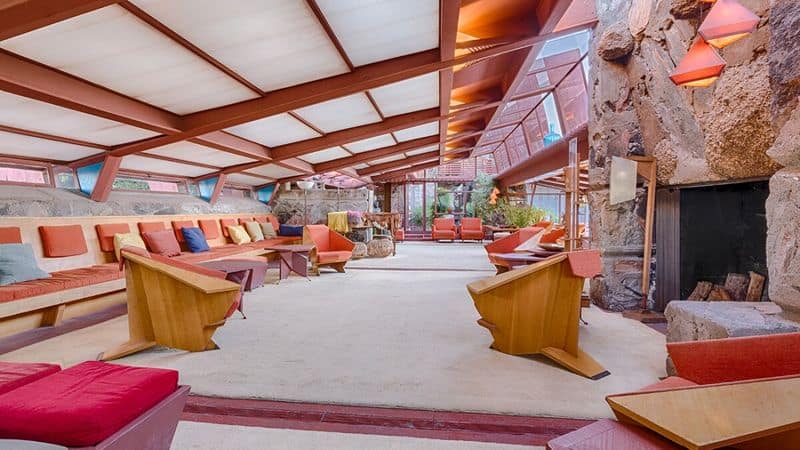
Taliesin West, Frank Lloyd Wright’s winter home and studio, exemplifies organic architecture in the desert.
Located in Scottsdale, Arizona, this retreat is crafted from native stone and redwood, echoing the surrounding landscape.
Wright’s use of low horizontal lines and open spaces connects the structure to the vast desert sky. The integration of indoor and outdoor living spaces reflects a deep respect for nature.
Here, architecture becomes a part of the land, allowing residents to savor the desert’s raw beauty and tranquility, making it a timeless example of living in harmony with nature.
5. The Eden Project by Nicholas Grimshaw
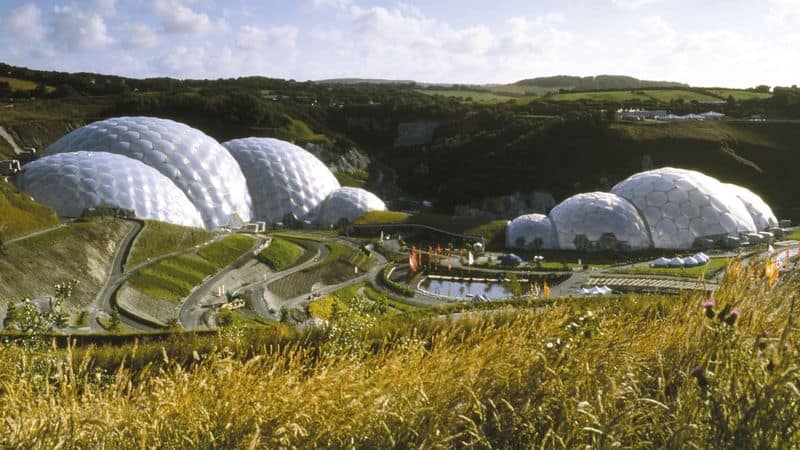
The Eden Project, designed by Nicholas Grimshaw, is a triumph of sustainable, organic architecture.
Located in Cornwall, UK, this structure comprises giant geodesic domes that house diverse biomes, from tropical rainforests to Mediterranean climates.
The domes’ transparent panels allow sunlight to nurture the plants inside, creating a self-sustaining environment.
Surrounded by gardens and landscapes, the Eden Project fosters a deep connection between human innovation and the natural world.
It’s a sanctuary where people can explore the harmony between architecture and nature, learning about sustainability in an immersive setting.
6. The Lotus Temple by Fariborz Sahba
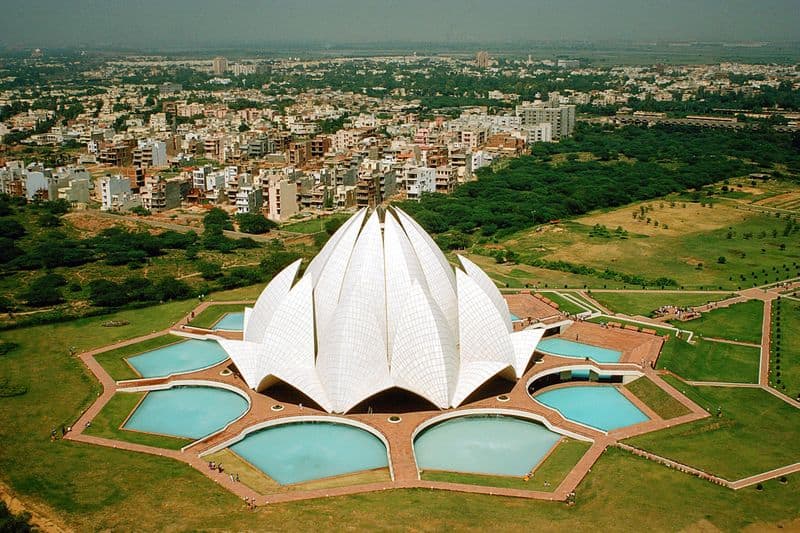
The Lotus Temple in New Delhi, designed by Fariborz Sahba, stands as an architectural symbol of peace and unity.
Constructed from white marble, this Bahá’í House of Worship is shaped like a blooming lotus, an emblem of purity and resilience.
The temple’s petal-like structures open towards the sky, creating a serene atmosphere both inside and outside.
Surrounded by nine reflecting pools and lush gardens, the Lotus Temple invites contemplation and reflection.
Its organic design connects visitors with nature, offering a spiritual retreat that enhances the soul’s connection to the natural world.
7. Louvre Abu Dhabi by Jean Nouvel

Jean Nouvel’s Louvre Abu Dhabi is a masterpiece of organic architecture, situated on Saadiyat Island.
The museum’s iconic dome, inspired by interlaced palm leaves, creates a ‘rain of light’ effect, casting intricate shadows over the galleries.
This design fosters a dialogue between light and space, enhancing the visitor experience. The structure’s integration with its island surroundings blurs the line between interior and exterior, offering a blend of art, culture, and nature.
By embracing the desert’s natural elements, Louvre Abu Dhabi creates a serene, reflective environment for art appreciation.
8. The Sagrada Família by Antoni Gaudí

The Sagrada Família, Antoni Gaudí’s unfinished masterpiece, is a stunning fusion of nature and architecture.
Located in Barcelona, this basilica’s design draws inspiration from the natural world, with columns resembling trees and facades adorned with flora and fauna.
Gaudí’s use of vibrant mosaics and organic forms creates a dynamic interplay of light and color, evoking a sense of wonder and awe.
As a living structure still under construction, the Sagrada Família symbolizes the organic growth of architecture, continually evolving and adapting to its environment.
9. Calatrava’s Milwaukee Art Museum
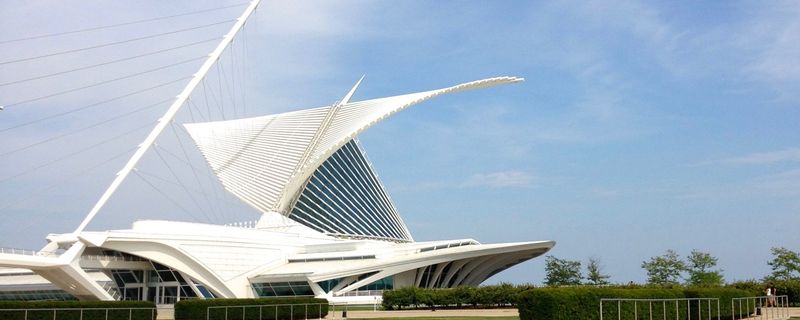
Santiago Calatrava’s Milwaukee Art Museum is renowned for its innovative design, featuring a movable wing-like sunshade called the Burke Brise Soleil.
This dynamic element opens and closes, reminiscent of a bird in flight.
Set on the shores of Lake Michigan, the museum’s design embraces both functionality and aesthetics, enhancing its lakeside setting.
The interplay of light and shadow within the structure creates a visual symphony, inviting visitors to engage with both art and the surrounding landscape.
It’s a testament to the transformative power of architecture in connecting with nature.
10. The National Museum of the American Indian by Douglas Cardinal
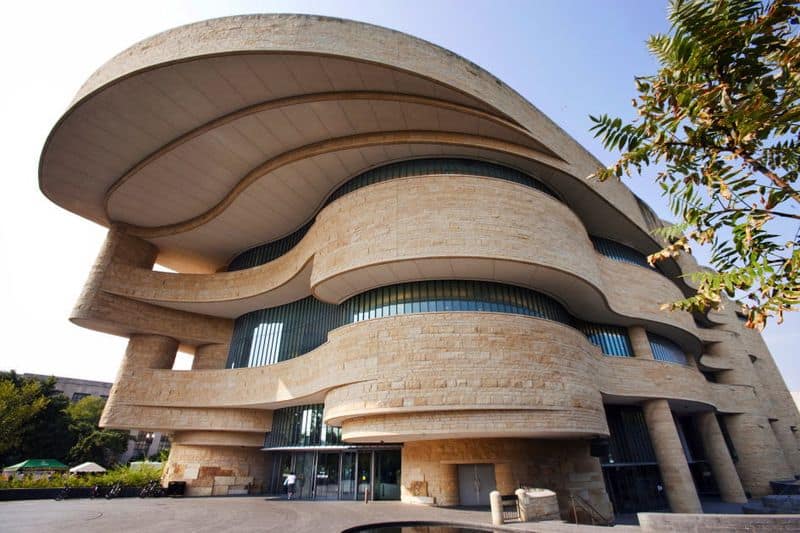
Designed by Douglas Cardinal, the National Museum of the American Indian in Washington, D.C., celebrates organic architecture through its flowing, curved sandstone walls.
These elements reflect natural rock formations, honoring indigenous cultures.
The museum’s design fosters a connection with the earth, echoing traditions that respect nature’s rhythms. The integration of indigenous art and materials within the structure offers a cohesive narrative that speaks to heritage and harmony.
This architectural gem invites visitors to explore the rich tapestry of Native American history, set against the backdrop of the nation’s capital.

